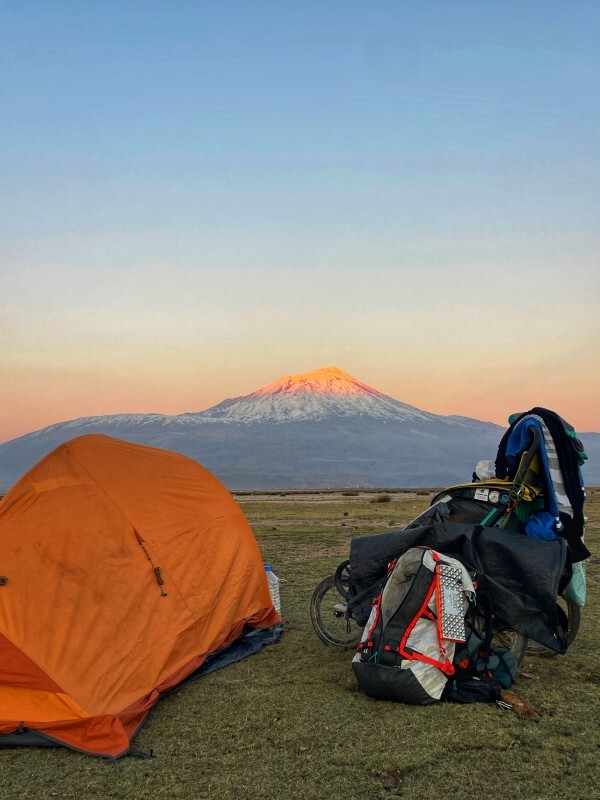
Here is another chapter of the travel diary of Nico, aka Pieroad, who after 3 and a half years on foot around the world arrives in Turkey, a gateway between East and West and the first stop on his journey in Europe, slowly returning home. Enjoy the reading!
A SMOKING ÇAY
In Turkey, two hundred and seventy thousand tons of tea are consumed every year. The country holds the record for the highest per capita consumption in the world, surpassing Morocco three times (oh, Moroccan mint tea) and double Iran, which is astonishing considering that in the two months I spent there I had drunk up to thirteen teas a day. Reading the data, a Westerner instantly imagines a colossal variety of flavors pigeonholed in a complex culture, so as to justify, in some way, this record. The imagination launched at full gallop gives birth to dozens of glasses with bizarre shapes, unknown varieties of sugar, colored, agglutinated in cubes of every shape and size, armies of saucers with floral motifs worthy of a university botany book, elaborate teaspoons like those used for absinthe, complex rituals for pouring and teapots in ceramic and precious materials that maintain at the right temperature, the exact one, a water distilled specifically for that type of tea.
Nothing could be further from the truth. The Turks consume three kilos of tea per person annually, but they always drink only black tea, çay, invariably served in glasses with curved sides like a girl's hips and a rounded bottom, placed on a saucer decorated with red petals. White, refined sugar is offered in cubes, rarely loose, and the teaspoon has the simple, slender shape we all know.
When I proposed alternatives to the families hosting me, exotic pomegranate powders or dried eucalyptus and menthol leaves to free the throat from the grip of winter, the compassionate faces with which they were welcomed made one think of extravagances to try once in a lifetime, to please the host rather than out of true curiosity. In some cases they were even refused, politely of course, accusing a consumption that is neither good nor bad of being new. Drinking çay is like walking: intuitive, immediate, necessary. Hopping on one foot, turning your back to go backwards, what's the point? When walking, you walk forward, one foot after the other, as has always been done and always will be done. There is a sort of religiosity for çay that in our country accompanies, for example, the culture of pasta, but differs from it in the silence with which it is observed and never celebrated, precisely because it is substantial and obvious. Tea is çay and çay is black tea.
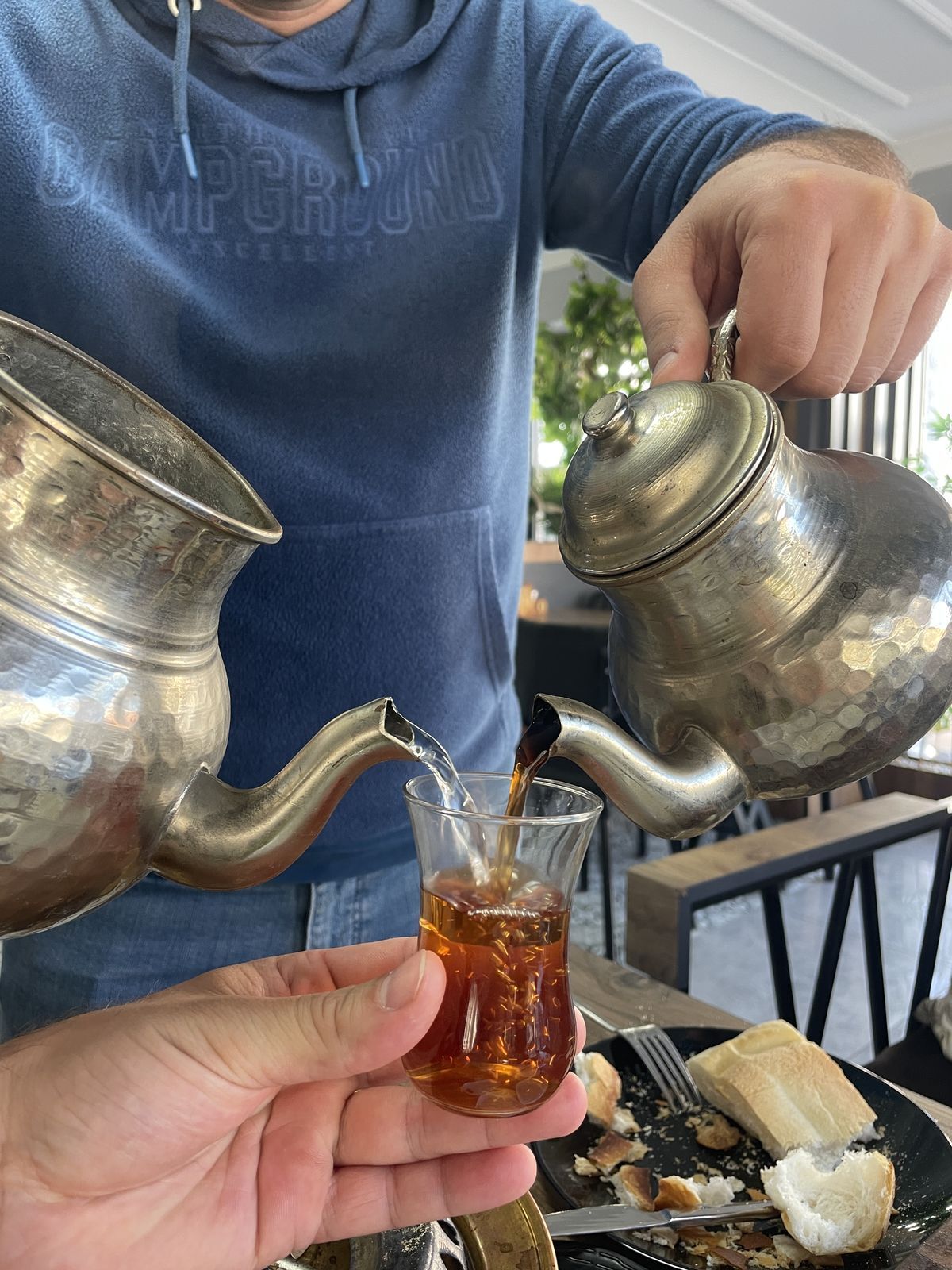
Türkiye - A ROUTE
The leaves originate from the province of Rize, in the north, squeezed between the Black Sea and the Pontic mountain range, where the humidity of the coast precipitates creating the perfect ecosystem for plantations. The direct route to transit from Georgia to Europe passes through the çay region, but if the rain is ideal conditions for growing tea, it is also the worst for walking, especially in winter. Better to endure a few hundred extra kilometers to save your feet from mold and your spirits from three gloomy and depressing months. Where to go, then?
Giorgio was a trustworthy guy, he had a keen eye and moved well, paying attention to details. We had met in Patagonia, on the Argentine side, and we met again two years later in Armenia, at the Aragats base camp, on the eve of the day we would climb to the summit. When you move constantly, you have little time to evaluate the people you deal with; in four years traveling the world, I had realized that I was at ease with those inclined to hard work and mountains. He was traveling in the opposite direction, toward Central Asia; in two months he would be teaching English in a Kyrgyz village overlooking the peaks of the Pamirs. We had talked about borders, about Iran, about paths and fortresses and medieval watchtowers, he had carved one on the top of his staff, it was the symbol he had chosen for Georgia. In Çıldır, on the Turkish side, there was a castle, the Devil's Castle, and a lake, Lake Çıldır of course, which was large but in winter it froze and you could walk on it. It was a good place to cross, even keeping to the road like normal people did. To exit Turkey, Giorgio had passed through there. He recommended the border because the controls had been lax; with Ezio in tow, the stroller in which I carry my material life, the detail was of fundamental importance. It's not every day that you see a double stroller pushed by a bearded guy with four-year-old hair. It was normal for the couple to arouse suspicion.
I would have found myself at the eastern edge of the Anatolian plateau, which corresponds to historical Armenia, a land with sad events due to the genocide that is not spoken of. I was touched by it, partly because of the guilty silence that covers it, partly because in the books written by Armenians of the diaspora it is spoken of with dreamy and melancholic words, those that vibrate on the same strings of a heart afflicted by nostalgia for home. I had to trade the rain for the cold and, since it seemed like an advantageous exchange, I decided to accept.
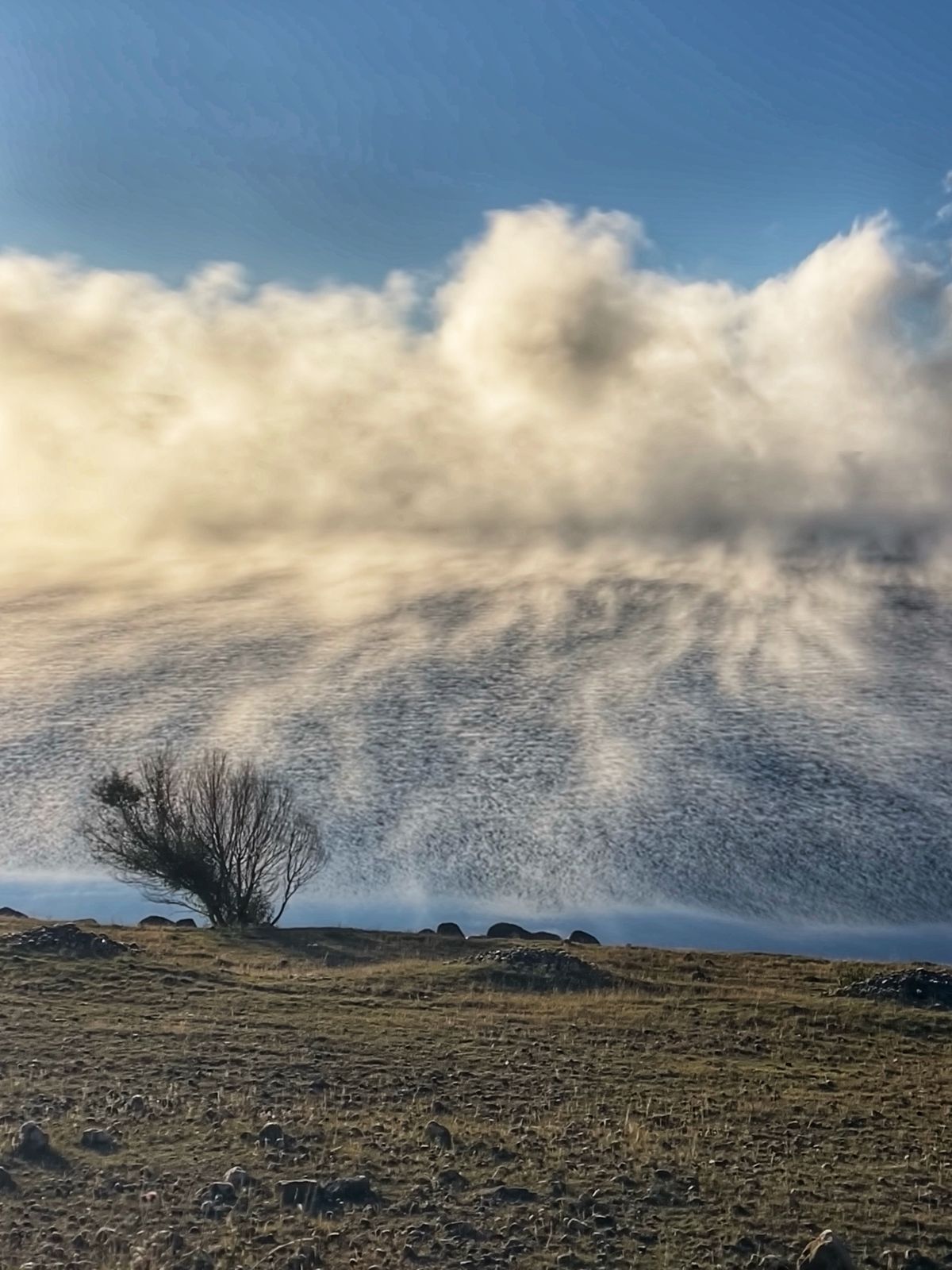
HISTORICAL ARMENIA - KARS
Kars is a city that is a thousand years old, at least. Its history could be recounted as if it were a nursery rhyme from the Western Fair: and the Turks came, who fought the Russians, who defeated the Ottomans, who drove back the Persians, who killed the Timurids, who drove out the Georgians, who eliminated the Mongols, who conquered the Seljuks, who beat Byzantium, who subdued the Armenians. Obviously the matter is more complicated, but the succession of peoples gives an idea of the traffic that has affected Kars since its foundation. The fortress, which still dominates the city, has never been an effective defensive bulwark: each invader had succeeded in conquering it and taking over the city. For the Armenians, Kars was the capital of the Bagratid kingdom, one of the first that national history records. There is still a church built at the time of Kars as capital, the Church of the Twelve Apostles, the year of its foundation nine hundred and fifty years after Christ. It has been remodeled, of course, especially by the Russians (the Russian church is Orthodox, the Armenian one, well, Armenian; we'll get to that later) and by the Turks, who converted it into a mosque, an unfortunate function judging by the absence of worshippers. When I got there, in fact, the other mosques in the town were full for midday prayers.
Bora, the boy who was hosting me, had suggested that we go together. I had been walking in Muslim territory for a long time, but I had not yet attended the Friday service, the equivalent of Sunday mass. Within the Islamic world, Turkey had been described as the secular country par excellence. On the contrary, from the first days, it was clear that the population was going in a direction different from the constitutional aspirations.
Turkish believers have a way of praying that I had not yet seen: they open their palms and place their thumbs behind their earlobes, applying a light pressure before leaving their arms at their sides and moving on to the invocations, as per the ritual. I asked Bora if the gesture had something to do with hearing, like “I am listening to you” or “Listen to my prayers” but he replied that it had the same meaning as the clasped hands for Christians: beginning of the prayer, full stop and stop. To each his own.
Kars preserves little of the Armenian presence and although, despite the centuries, the trace of a people can aspire to memory, the will of the Turkish governments to cancel their memory has made sure that every trace was modified or, worse, eliminated altogether. At the city museum the mention was negligible and the other physical places had been erased. A trip to Ani, capital of the Bagratid kingdom after Kars, remained to be made.
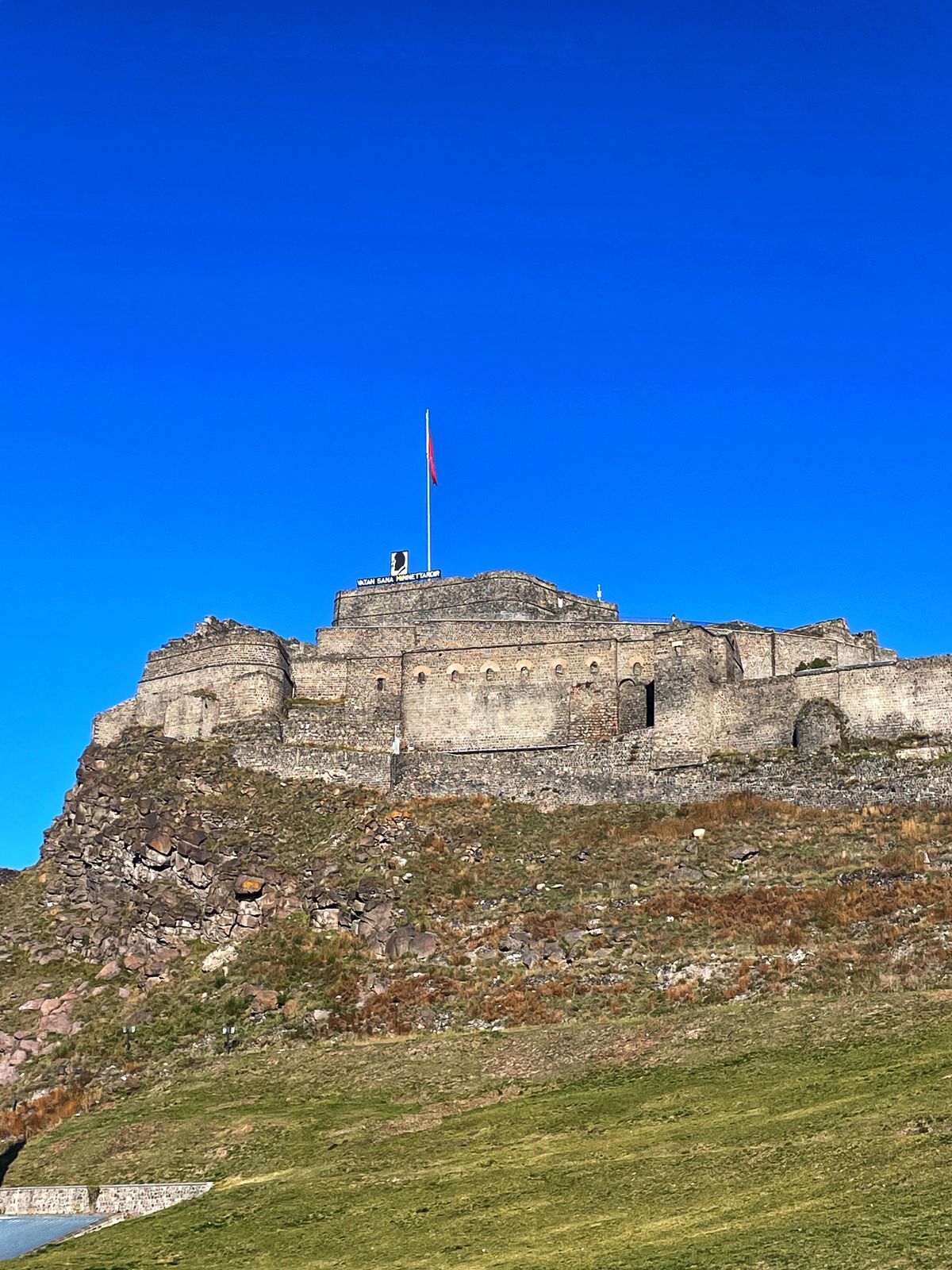
HISTORICAL ARMENIA - ANI AND VAN
While the latter has survived, transformed, the passage of time, Ani is today an archaeological site in ruins, a shadow of a past that is supposedly glorious. The chronicles speak of it as the City of a Thousand Churches, home to an exceptional artistic sensibility, the result of its strategic position at the crossroads between East and West, the Caucasus and Mesopotamia. In the remains of the cathedral, some scholars of sacred architecture have traced the elements of the transition between the Romanesque and Gothic styles, defining it as the cradle of the slender and pointed churches that would populate Europe in the following centuries.
Bora and I cautiously entered the belly of the ruined giant. Unknown letters stood out on the pediment of the side door: the Armenian alphabet, one of the oldest still in use. It was created on a drawing board in the fourth century, with the aim of giving its people an element on which to base their national identity. There is another, prior to it: religion. As I mentioned, the Armenian church is Armenian, not Catholic, Protestant, Orthodox or Evangelical. The Armenia of the best times was the first state to recognize Christianity as its official religion, preceding by eighty years the Edict of Thessalonica with which the Roman Empire was consecrated to the religion of Christ. Religion and alphabet are the elements that have ferried the Armenian people through the centuries and adversities, cementing their cultural identity in the presence of cumbersome and far more powerful neighbors.
Ani suffers alone on a plain battered by the icy winds of Anatolia, discolored and burned. Earthquakes and looting devastated it and now it languishes forgotten by the world, too far from the rest of Turkey and unreachable by Armenia, whose border remains closed for political reasons. An invisible torrent slides at the bottom of the gorge that divides the twin lands. Ani, a step away from contemporary Armenia, is the symbol of a broken nation.
The biting cold of the province of Kars is the most severe in Turkey. The average annual temperature is four degrees, the minimums reach thirty, forty below zero. I would have liked to stay a long time, as happens every time I fall in love with a sad story, but moving on foot requires patience and a certain perseverance, especially when the distances are great and the country offers a limited visa, neither extendable nor renewable. Ezio and I pushed into the heart of historical Armenia, to the slopes of Ararat where legend has it that the Ark of the Covenant rested; and then towards Van, the lost paradise, the city on the blue lake of which today only a few collapsed churches remain. During the First World War the Turkish army preferred to bomb its own city in order to flush out the Armenian resistance; only the citadel remained standing, from which the cannons roared.
It was still very cold, so much so that I began to wonder if staying on the plateau was the best choice. The tent, sleeping bag, and mattress were well-worn from years of service in all conditions, but I was starting to feel the fatigue and the lack of breaks: in thirty thousand kilometers, I had never returned home to unplug. The people I asked for advice were of unanimous opinion: I had to go down toward Mesopotamia. In Van I was the guest of Kamuran, a tall, slender Kurdish boy, a medical student. We began to discuss the route over a teapot of boiling çay, one of those double ones that contain water in the lower belly and concentrated tea in the upper one, so that each person can choose the strength of their own infusion. Kamuran revealed that in the long term drinking çay is associated with a loss of iron in the blood, according to the doctor, but even knowing this he couldn't give it up. After all, he added, laughing and filling yet another glass, it's likely to happen, not certain. As he poured more tea, leaves remained trapped in the filter of the small teapot. When we had finished it, Kamuran opened a second yellow plastic bag, labeled Rize, similar to the first. This time, however, the leaves were so finely ground that some escaped to the bottom of the glass.
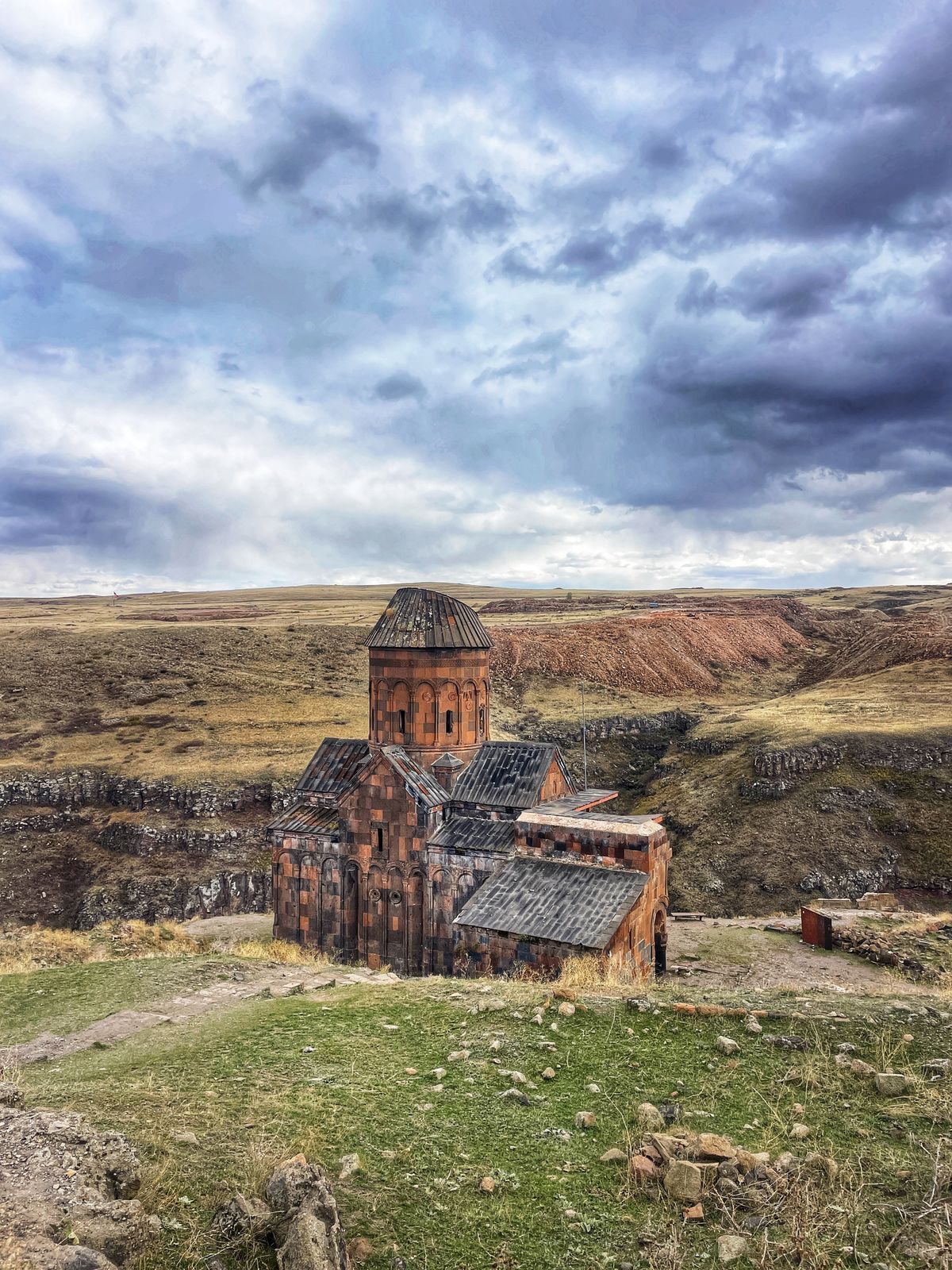
LOSING HEIGHT BY WALKING
I've been travelling for a long time and yet when I start writing the same thing always happens: I dwell on the first few days and when I realise I decide to cut back on the rest of the journey, exactly like when I walk and the days of my visa slip by faster than the kilometres.
Kamuran had convinced me, I would go to Mesopotamia. No sooner said than done? Not so much. From Van I skirted the lake of the same name amid persistent rains and tales of hungry wolves, exaggerated as always, until I reached the fork that would take me towards the plain. Do you remember the Pontus mountain range, the one that divides the Anatolian plateau from the coastal strip cultivated with tea to the north? Well, on the opposite side, the one where I was, there is a second mountain range, the Taurus mountains, and to get to Mesopotamia I would have had to climb over it. By now I calculate distances in days, I'm used to it: from the Tatvan fork, to get to Diyarbakır, there are two hundred kilometers, five days. The supplies must be enough for five lunches and four dinners, the last one is in the city, on the day of arrival. Five breakfasts, five snacks, a few extras of course. Thanks to Ezio, I can always have plenty.
As the altitude decreased, the night condensation decreased in parallel and the air began to warm. Despite the now tepid atmosphere, the çay continued to be served at temperatures worthy of a circle of hell. The streets of the villages I passed through were dotted with çay evı, tea houses, little holes inhabited by gentlemen in shirtsleeves who spent hours playing dominoes and cursing each other. Curiously, the çay evı only serve drinks, very rarely a piece of bread, perhaps a simit, a whole wheat donut; this means that you bring your own food from outside, buying a snack at the bakery next door.
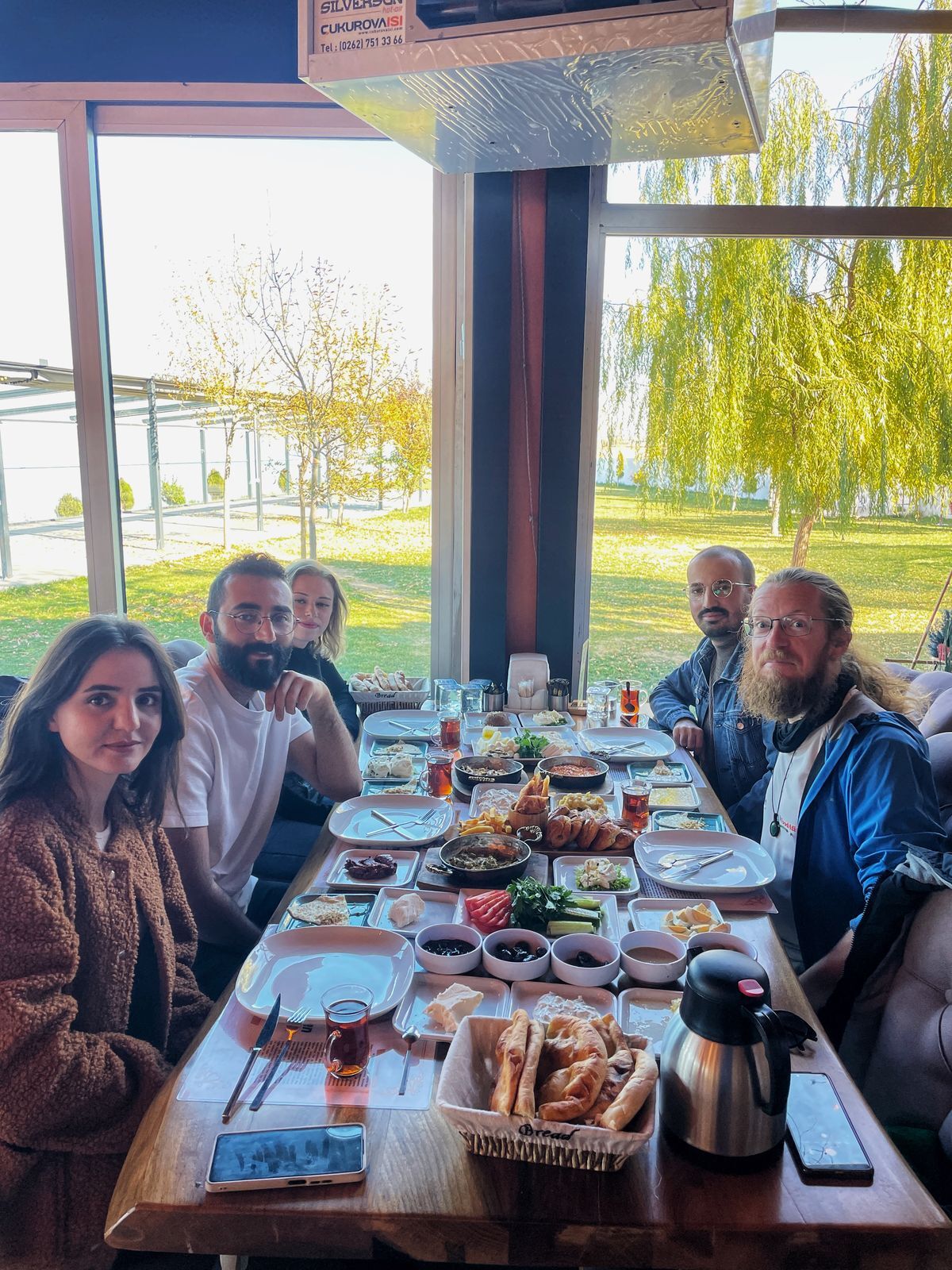
MESOPOTAMIA
I arrived - how beautiful this word is: I arrived. If I say I arrived it seems like I left a few hours ago, that I hadn't made it to the road, instead I arrived, I arrived speaks of a remote past, in which it took time and effort to get where you wanted to get. I arrived, therefore, I arrived in Diyarbakır after ten days of marching across the Anatolian plateau, Lake Van, the Taurus mountains and the Mesopotamian hills, a couple of cities of a lower order than the province and a sparse group of inhabited centers, many tea houses, a few workshops where I had been invited for a snack and even a couple of mosques where the imam had offered to spend the night when I had asked to pitch a tent.
So I arrived in Diyarbakır, where Sheriff was (that's his real name) whose jovial hospitality kept me there for a few days. He had been on Erasmus about ten years before, in Bari, and from then he remembered only one word, which he used to call me with a smile: fra! The first evening, that of the fifth day when there is no need to cook, we went to eat the local specialty, ciğer kebab, lamb liver cooked on the grill, a delicacy. Turkish kebab is very different from the one we have in mind. The piadina served in Italy, the meat slaughtered from a roll burned with gas, is almost rare to see in Turkey. The traditional kebab is meat on a spit, a blade on which spiced minced meat is compacted or a series of morsels are threaded - chicken, liver, vegetables. Recent inflation has doubled its price, bringing it to around 6-10 euros, but habits die hard and lamb is truly tasty, the smell of roast meat on the street is second only to that of freshly baked bread.
The cities of Mesopotamia I passed through are rich in history. The Roman walls of Diyarbakır enclose a lively and colorful historic center, Ottoman caravanserais, Persian-inspired mosques and even a few Armenian churches that miraculously remained standing. Urfa, on the other hand, preserves Roman catacombs that are illuminated at night by soft lights, creating an aura of suggestion. Not far from the area where the dead rest, there is the cave that protected the life of Abraham. In a story very similar to that of Christ, King Nimrod was prophesied the birth of a child who would challenge his power. He sought out and killed anyone who corresponded to the prophecy, but of course he was unable to find Abraham. The child lived for thirteen years in the cave, came out, became a shepherd of flocks and men, became a prophet and father of the religions that bear his name - including Islam.
The history of Mesopotamia is overflowing and is not limited to inhabited centers. Archaeological sites abound, new ones are discovered every few years and people are still digging in search of answers and new questions. The most famous is undoubtedly Gobekli Tepe, where the first examples of megalithic structures in history were found. It has always been thought that it was agriculture that led man to undertake a sedentary life; however, the monoliths of Gobekli Tepe seem to tell a different version, in which it seems that it was a spiritual tension that led men to settle down. The Tigris and Euphrates, witnesses of these adventures, made their appearance while I was walking on rolling hills planted with olive trees, as if by magic emerging from elementary school books. They saw humanity's transition from a nomadic to a sedentary life; where was I, compared to the unidirectional flow of their course?
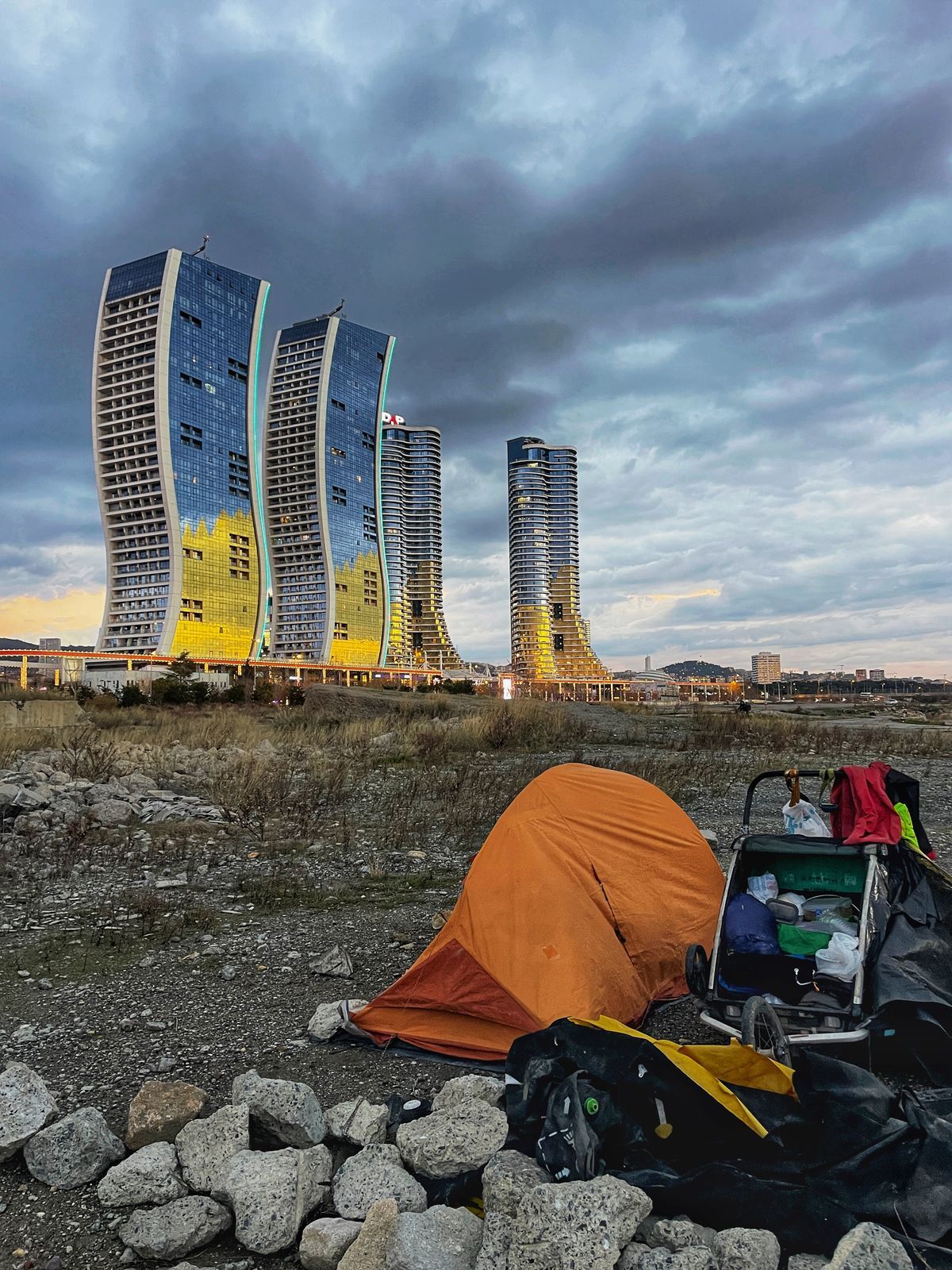
HOMEWARD
With the sound of burning çay I discovered the culinary capital of Turkey, Gaziantep, and proposed a non-alcoholic toast (unusual for a Venetian) with some Italian guys I met in Adana. I had crossed the Taurus mountain range for the last time, almost touching the shores of the Mediterranean. Four years earlier, I had left it to board a catamaran and cross the Atlantic, heading for Latin America. I realized - I realize - that this expression, four years, comes up many times. How many times have I written it? Much less than I have thought it. Approaching Istanbul, at the end of the journey in Turkey, meant concluding the chapter called Asia and returning to Europe. Returning. I have felt at home on more than one occasion and perhaps I have learned to feel at home wherever I pitch my tent: it is my orange house without an address, small enough to fit anywhere and big enough to sit in. However, Europe remains my homeland, the place from where I left and where most of my affections are found: old friends, new ones, my family.
It took me another good month to walk from Adana to Istanbul. I returned to the harsh cold of the Anatolian plateau, I returned to warm my belly with the piping hot çays of the service stations. It was very difficult to manage to pay for them, seeing me arrive someone would signal to enter the room used as an office where a huge thermos kept the tea at temperatures close to boiling. In less than you can say, I found myself with fogged up glasses and a glass in my hands. A curiosity, in this regard, is that the çay is so hot that you have to use two glasses to be able to hold it without burning yourself! Unfortunately, the concept of waste or thrifty use, outside of Europe, has not yet taken root.
In early October 2023 I took my first steps from Calcutta, India, marking the beginning of my crossing of the Asian continent on foot. Ten thousand kilometers and fourteen months later I crossed the Bosphorus channel, setting foot in Europe. I reached the border with Bulgaria a week later, pushing an unusually loaded Ezio. My friend, in addition to supplies, clothes and camping equipment, kept a box with a domino game and a system of teapots to take home as a souvenir of the three months spent in Turkey. Just as mate, in Patagonia, is a space for conversation and meditation, a steaming çay is the coefficient of social aggregation in Islamic culture, acting as a cold beer for the Western world. I have asked myself many times what has changed in my way of life; returning home I will be able to notice it, by difference, observing the lives of those who have remained. However, however small the detail, I believe that çay will remain to accompany me during the chats in which I will talk about the World Tour on Foot.
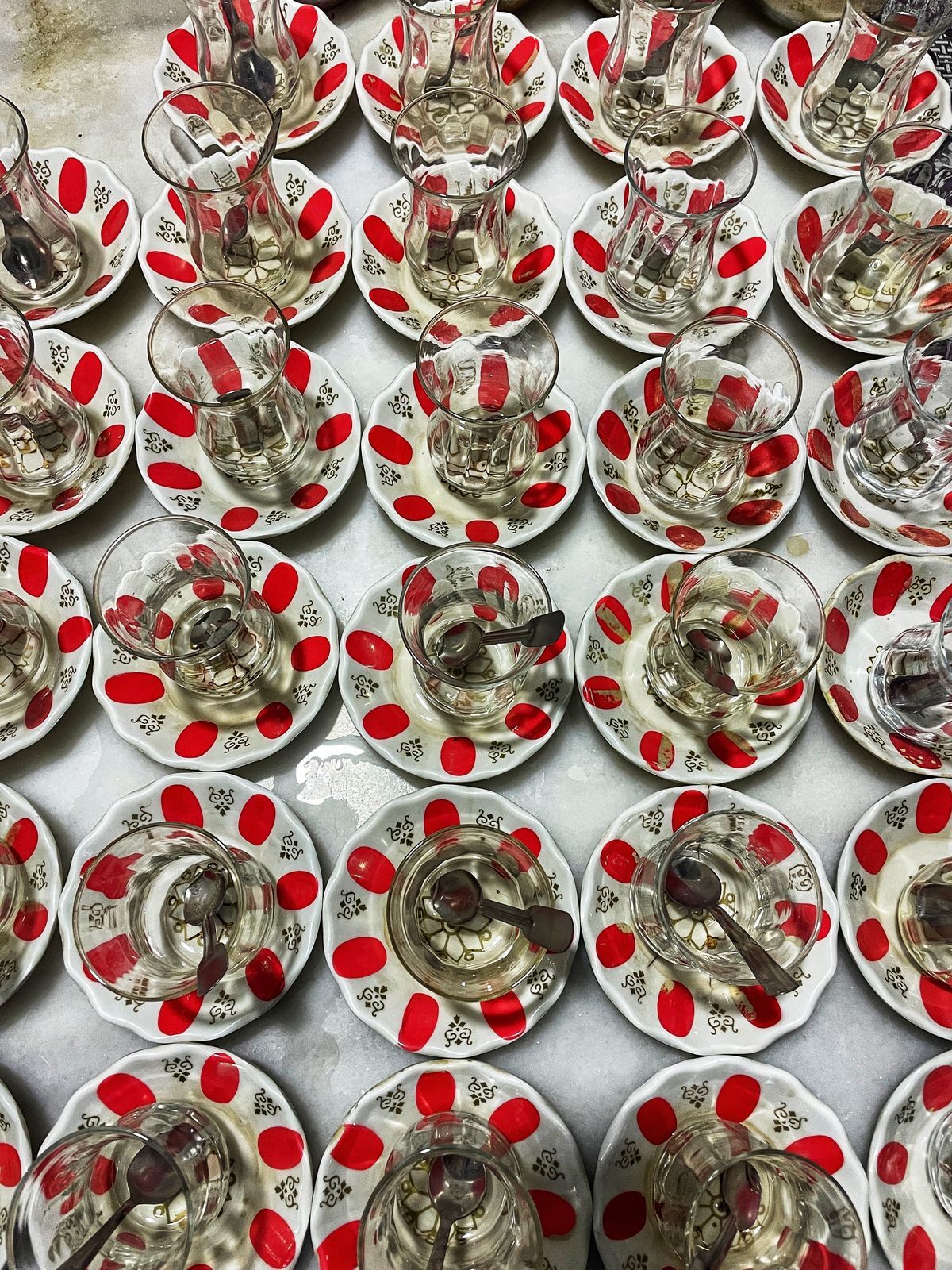
#worldtour #worldtouronfoot #pieroad #nicologuarrera #turkey #anatolia #anatolianplateau #mesopotamia
